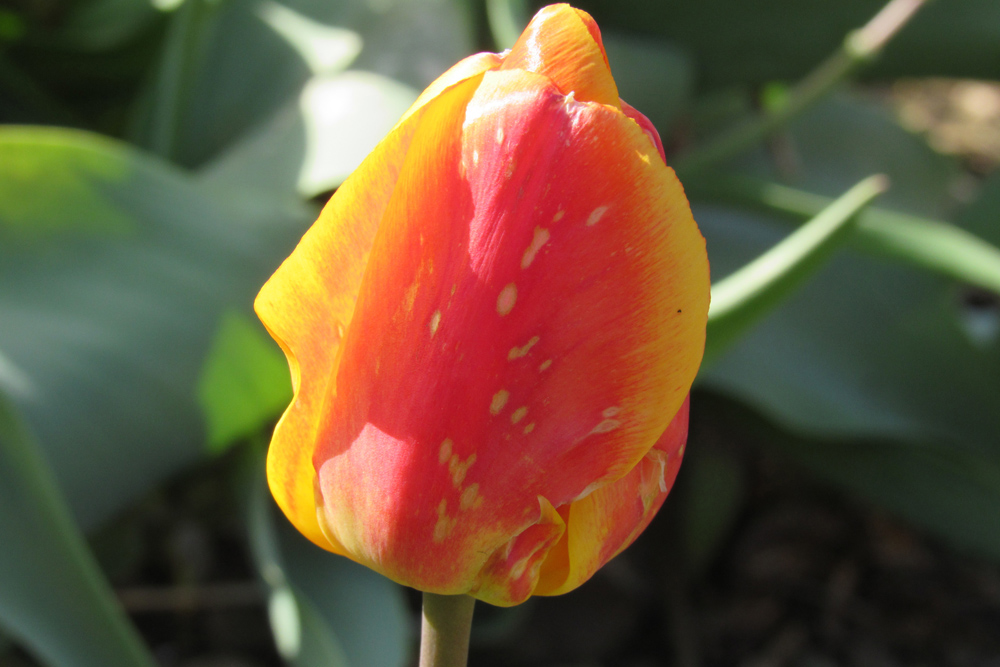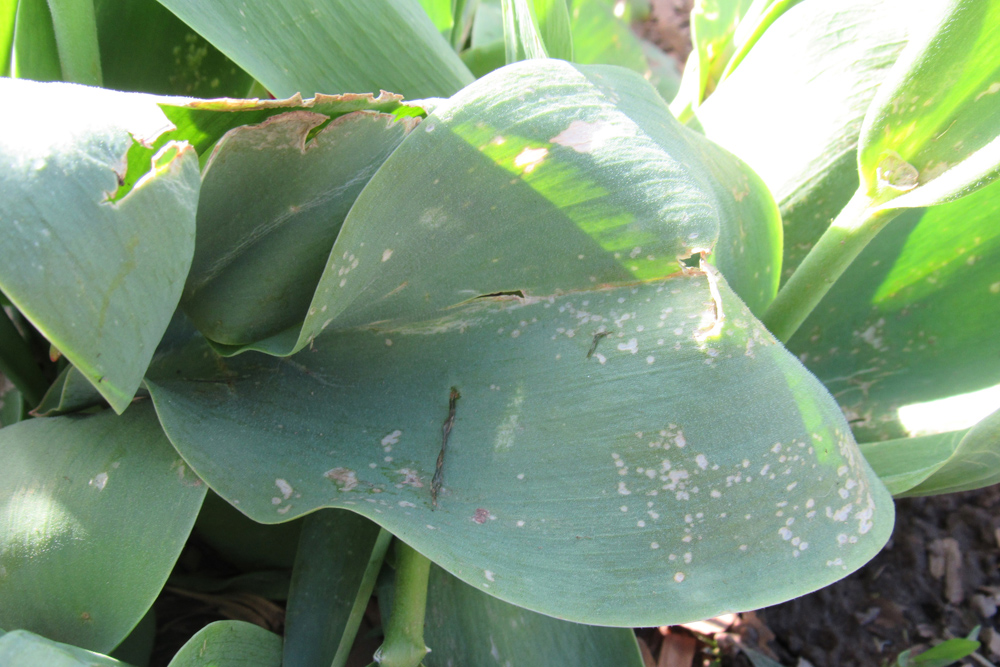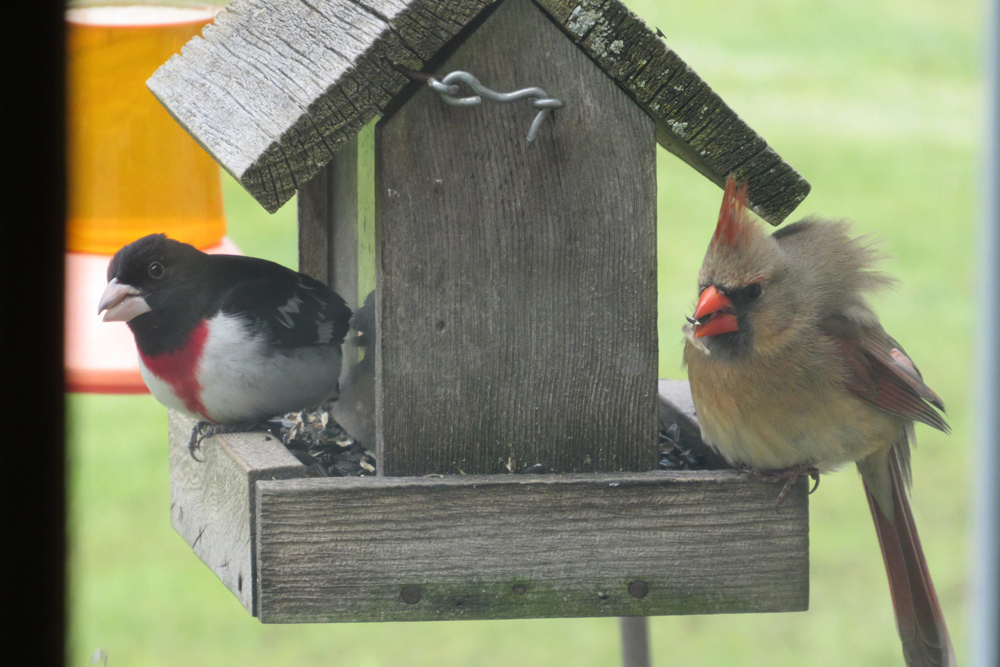Botrytis blight in tulips

Colorful and easy to grow, tulips are a staple of spring gardens. They come in a wide range of colors and brighten the yard and garden throughout spring. The mix of weather we have experienced this spring is very typical, but tulips show remarkable resistance to repeated beatings from wind, rain, and springtime snow. They are, however, susceptible to a fungal disease brought on by cool, wet conditions.

If you are noticing tan or white-colored blotches on your tulip petals, stems, or foliage, you might think it is due to crazy springtime weather swings, but it probably is not weather-related damage. Botrytis blight is a fungal disease, sometimes called Tulip Fire, that affects all parts of the plant, including the bulb. Be on the lookout now, as the infections are visible.
The cool, wet weather of spring – 60 degrees F or less – is favored by the fungus, and days of rainy, wet weather or frost can make the situation worse. Once your tulips have been infected, the fungus will return year after year. It also spreads easily to other tulips in your yard.
According to the Plant Disease Diagnostic Clinic at the Cornell University College of Agriculture and Life Sciences, symptoms include leaf malformations and/or light tan patches on leaves. These infections are somewhat sunken, yellow to light tan in color, and are surrounded by a water-soaked area. On colored flower petals, the spots appear white; if your tulips blossoms are white, the spots will appear brown. Stems show gray to brown infections and likely will collapse.
On the flower bulb, Botrytis blight shows yellow to brown, somewhat sunken, circular lesions. Small, shiny black sclerotia, which are the resting structure of the fungus, can develop on rotting leaf, flower, stem, and bulb tissue. The fungus overwinters as sclerotia in infected plant debris.
The fungus infects tulip leaves as they emerge in the spring. Spores produced in infected areas will spread, causing infections on other leaves, petals, and stems.
It is easy to understand why Cornell recommends managing the disease through inspection and sanitation. Remove any plant parts affected, or cut back the entire plant at the base. Place all materials in a plastic or paper bag and discard them in the trash. Never place in a compost pile. It is also best to avoid clean-up and removal of plant material when the plants are wet, either from rain or dew, as the infection easily spreads in wet conditions.
If you leave bulbs in the ground, you can try using a fungicide in the spring as leaves emerge to help control the disease. Use a fungicide labeled for use on Botrytis blight in tulips and follow label directions. Spray the tulips, following label directions, until the blooming stage. Another important management strategy is rotating your tulip bulb plantings, just as you do vegetables in your vegetable garden. Refrain from planting tulips in the same location no sooner than every third year. Planting in a spot with sun and good air circulation as well as good soil drainage is also helpful in controlling Botrytis.





